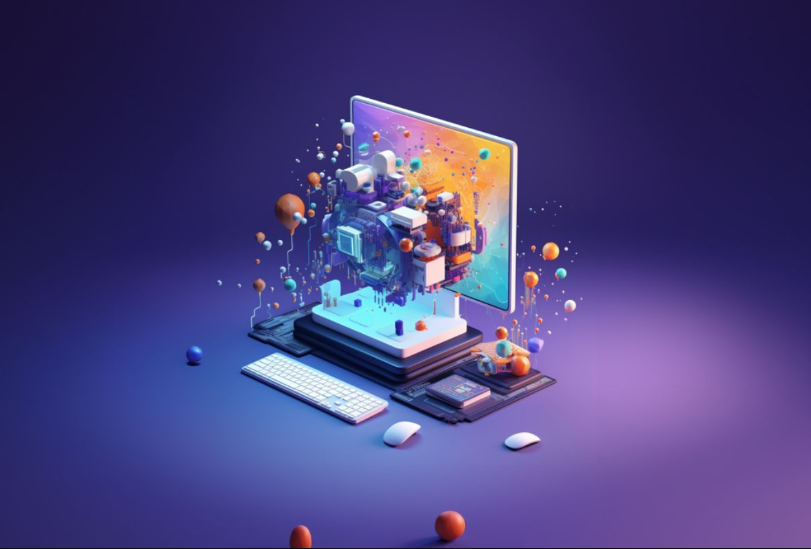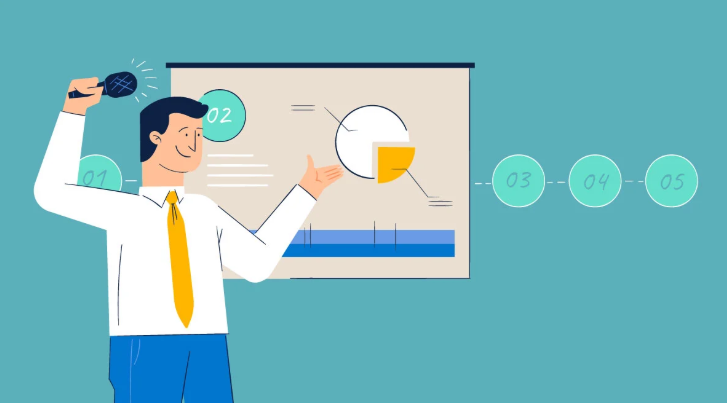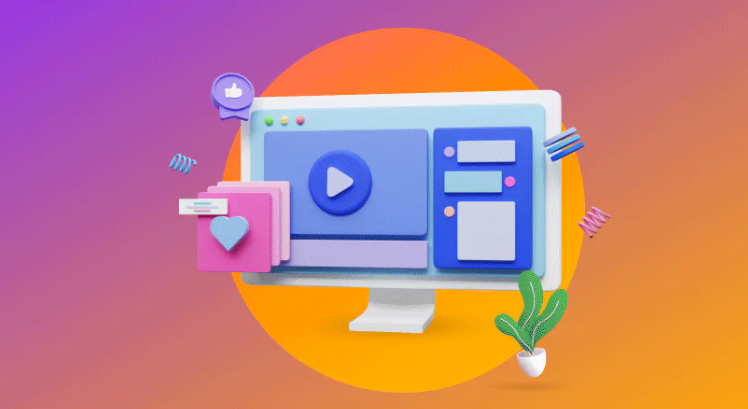Introduction to Animations on Websites
In the present generation, where many companies have embraced the internet, incorporating animations into websites is one of the most critical factors for boosting interaction. These dynamic features restore the life of otherwise static pages, making them more interesting.
Animations can be minimalistic, such as faded text or images sliding, while others can be fancy; we mean narratives or frames that can help readers understand a particular message. The most relevant advantage of implementing animations is that they increase the chances of successfully entrapping the user’s attention. Through movement, colour, and timing, animations can guide the users’ attention to areas of the page where they should engage with different elements.
Animations are also crucial in increasing the user interface of a website. They can return graphical feedback; this way, the users perceive the consequences of their actions, such as clicking a button or submitting a form.
For example, a button that changes colour when hovered over signals to the user that it is clickable, enhancing the intuitive nature of the site. Moreover, animations can help streamline the navigation process. Animated scroll cues, for instance, can guide users through a website’s layout, ensuring they don’t miss essential sections or features.
Outside of usability, animations add aesthetic value to a website and help make it. An effectively developed animation can complement many features of the brand personality and make people remember the site. For instance, a playful animation might suit a children’s toy store, while sleek, smooth transitions might be more appropriate for a tech company.
Thirdly, animations allow a lot of information to be summarized and easily understood. Since data is easier to digest when subdivided, visual steps or sequences can represent complex ideas or strata of a procedure.
When deliberately employed in animation design, animation provides users a more engaging experience that may also positively predispose them to the system.
Elevating the User Experience
They play a massive role in the generally good user interaction, taking people through content in a non-disruptive manner. These are very helpful since they make operations and navigation easy and, at the same time, help minimize the time newbies take to master the software tools.
For example, a subtle animation highlighting menu items as the user scrolls can make the navigation process more cohesive and user-friendly. Additionally, animations can signal interactions, such as a gentle bounce effect, when a user hovers over a clickable element, indicating that it is interactive.
When used judiciously, animations can highlight critical areas of a webpage without overwhelming the user. For instance, a gently pulsing call-to-action button can draw attention without intruding. They make the site more convenient for the effectiveness of the search and enhance the degree of users’ satisfaction with it.
Besides response kinetics, animations are another important ingredient in engineering responsiveness. In my previous work of creating a powerful look and feel, these types of interaction can provide a persona and character to the interface, causing it to respond as a result of inputs it receives. For instance, moving from one part of the site to another should be seamless to ensure users stay active and thus lower bounce rates.
As with most designs, adding animations to give a user feedback after a form is submitted, for example, adds a lot of value to the interaction. A simple animation telling the user that a form is being processed can quickly ensure trust and minimize a website’s uncertainty.
Animations are a chance to highlight a company’s personality on a website, revealing its character. Intentional animations used within the site can help enhance the user’s fun, making the next time they come optional but likely. From the widest view, animations in any site may help make the general appearance and surroundings far more captivating, creating the user experience base a whole new realm higher.
Boosting User Engagement
Interactive elements powered by animations significantly enhance user engagement by making the website more dynamic and enjoyable. Other effects, including the hover effect, may amplify information or provide instantaneous feedback on the mouse’s preference for different segments to help achieve a more engaging interface.
Visual elements like moving buttons that change their colour or, for instance, become round when clicked make actions more enjoyable and understandable and help users navigate through actions effortlessly.
Such animations also help draw user attention to features or calls to action, as they do not want a user to miss something significant. For instance, a progress bar that fills up during loading times informs users of the wait and keeps them engaged, reducing the likelihood of them leaving the site. Swipe animations in image galleries can encourage users to explore more content by providing a visually appealing way to navigate through images.
Moreover, these dynamic elements can create a more immersive experience that captures user interest. For instance, animated feedback during form submissions can reassure users that their actions are being processed, enhancing trust and satisfaction. Simple animations like loading spinners or expanding sections make interactions more intuitive and smoother.
Implementing animations thoughtfully ensures that they add value without becoming overwhelming. Animation tools are in the middle of being strategic directions that have the power to turn bored surfing into an exciting trip that keeps users on the site longer.
When employed and well-coordinated, these dynamic elements present remarkably enhanced interaction and, through the active engagement of visitors, shift the idea of the site’s projected use toward its actual use.
Effectively Presenting Information
Animations are instrumental in breaking down complex information into more digestible pieces. For instance, animated infographics can illustrate statistical data or processes in an engaging manner. This makes it easier for users to understand complicated information faster than in static writing or graphics. In addition, animated infographics bring an additional level of story to data, making it easier to comprehend.
Furthermore, animations increase communication on websites with narratability. Moving visuals add more depth and excitement to stories and grab users’ feelings and attention than writing. Whether it’s a timeline that progresses visually as the user scrolls or character animations that guide users through a narrative, these elements bring content to life in a way that static images cannot.
Animations can also emphasize key information or concepts. For example, a sequence showing the step-by-step process of a product assembly can make instructions more transparent and memorable. In the same way words can be simplified to make ideas easier to comprehend, animated diagrams are helpful because they make math easier for just as many people to understand.
Furthermore, deciding to animate data can also make static numbers much more interesting. With buttons that the users can play daily, weekly, or monthly charts and graphs with changeover movements, it provides a better understanding. Not only does this work improve the users’ comprehension, but it also makes the platform much more entertaining.
Animations should be used thoughtfully to enhance rather than detract from the content. The main challenge when employing animations as an innovation to facilitate the conveyance of intricate information is achieving an equilibrium between aesthetic appeal and simplicity of comprehension.
Best Practices for Animation Implementation
Implementing animations effectively requires a careful balance to avoid overwhelming users while maintaining optimal website performance. To achieve this, start by ensuring that animations are purposeful and add value to the user experience. All of them should be essential in helping users understand how to navigate the website, website anoint, or given.
Animation optimization should always be a goal when embarking on an animation project to ensure that any problems across devices and browsers can be detected and solved. This concerns using simple animations that do not slow down the web page loading process.
Techniques like CSS animations or optimized JavaScript can create fluid, responsive effects without compromising speed. Additionally, considering the user’s device capabilities, mobile users may have performance constraints that differ from desktop users.
Accessibility is another critical factor in animation implementation. Ensure that animations are not overly distracting or disorienting for users with visual impairments. Provide options for users to turn off animations if needed and use motion preferences available in modern browsers to respect user settings. This helps make the website accessible to as many people as possible, including the entire population.
The sequence has to feel unified; therefore, the animation’s style and the time it takes to complete it must be the same for every animation. Then, develop a style sheet for their usage, that is, have rubrics on how and when to use animations to make the website look consistent. This cemented the brand image and ensured people could anticipate engagements, making it easy to use.
The testing process is considered very important when implementing animations. Perform readability and function tests across various devices and browsers to expose performance and layout problems. Getting feedback from users helps understand the impact of animation on the whole matter and how further optimization might be conducted.
Animation can be used in website design to improve not only the surface appeal but also the usability to achieve these best practices.
Conclusion
Website animation can be seen as an essential part of the website’s aesthetics or a meaningful contribution to its usability. Animations that help guide users through content indicate when something has been clicked, and reduce complexity make for a marked improvement to user experience on a site.
Thoughtfully implemented animations can highlight key areas, convey complex information in digestible formats, and reinforce brand identity. This means there is a great need to balance between style and function when it comes to animations because it can ultimately become counterproductive to users if left unchecked. Using imperative methods, animation can enhance interactivity regarding the site and keep up the visitors’ interest, which is always a point of distinction between the site and other standards and similar sites.



